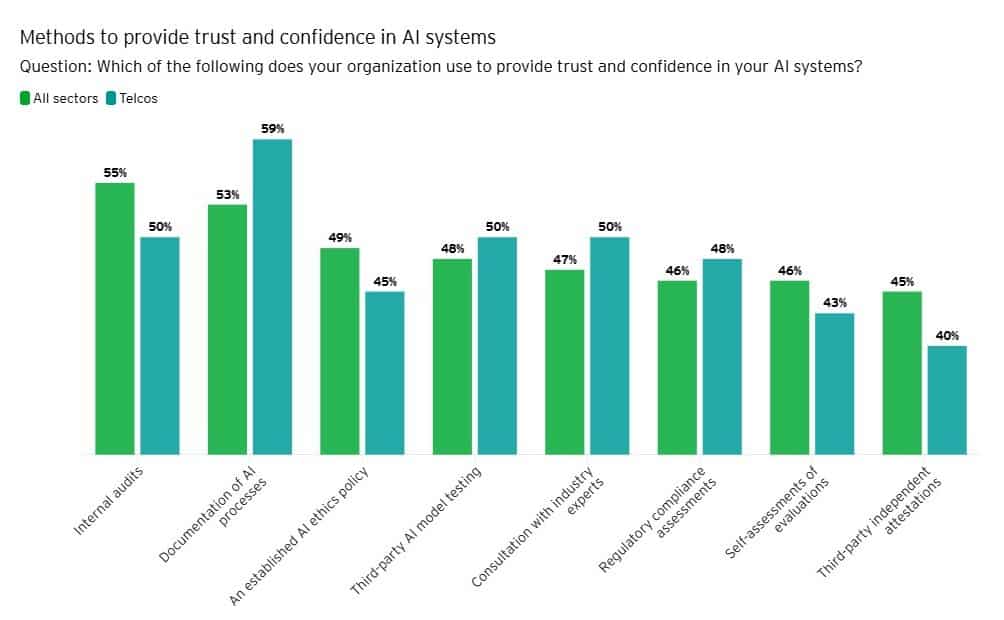The telecommunications industry is grappling with a multitude of risks as it navigates the complexities of artificial intelligence (AI), ineffective technology transformations, and an evolving geopolitical landscape.
The latest EY report, Top 10 Risks in Telecommunications for 2026, reveals that while AI's integration into telecommunications presents significant opportunities, only 59% of telco professionals globally confirm they possess effective methodologies for managing AI risks. This is notably lower than the 66% average seen across all sectors.

Source: EY Responsible AI Survey, June 2025

The report notes that many telecom companies are ill-prepared for the burgeoning cyber threat landscape.
Joongshik Wang, EY ASEAN technology, media & entertainment and telecommunications leader, asserts, “For telcos, responsible AI is about trust as much as it is about compliance. As operators in Southeast Asia embed AI into network optimisation and customer engagement, transparency and accountability become critical.”
The second-highest risk identified in the report concerns ineffective transformation through new technologies. Despite the potential of AI, many telcos struggle to implement successful frameworks.
Wang noted that resource constraints and governance difficulties are primary obstacles: “In Southeast Asia, consumers now expect more reliable networks and integrated services. To meet these expectations, telcos must modernise their legacy systems and networks.”
Talent management also emerges as a significant concern, ranking third in the risk assessment. The demand for skills related to cybersecurity, AI, IT infrastructure, and data science is escalating, driven by the need for specialised roles to support advancing technology. However, many telcos are finding it challenging to attract the necessary talent due to competitive salaries in other industries.
The report also highlights a new risk: the impact of geopolitical tensions. With 22% of telco leaders citing geopolitical issues as a growth threat in 2025, companies must navigate the complexities of global trade disputes and market uncertainties.
“The geopolitical environment brings both challenges and opportunities for telecom operators. The push for digital sovereignty can help telcos gain a competitive edge while managing the risks associated with evolving global dynamics,” concludes Wang.
The telecommunications sector stands at a critical juncture. While the integration of AI and modern technologies offers immense potential, failure to address key risks related to security, transformation, talent management, and geopolitical uncertainties could hinder success.
As telcos venture into 2026, a strategic focus on responsible AI, workforce development, and adaptation to external pressures will be essential for sustainable growth.



